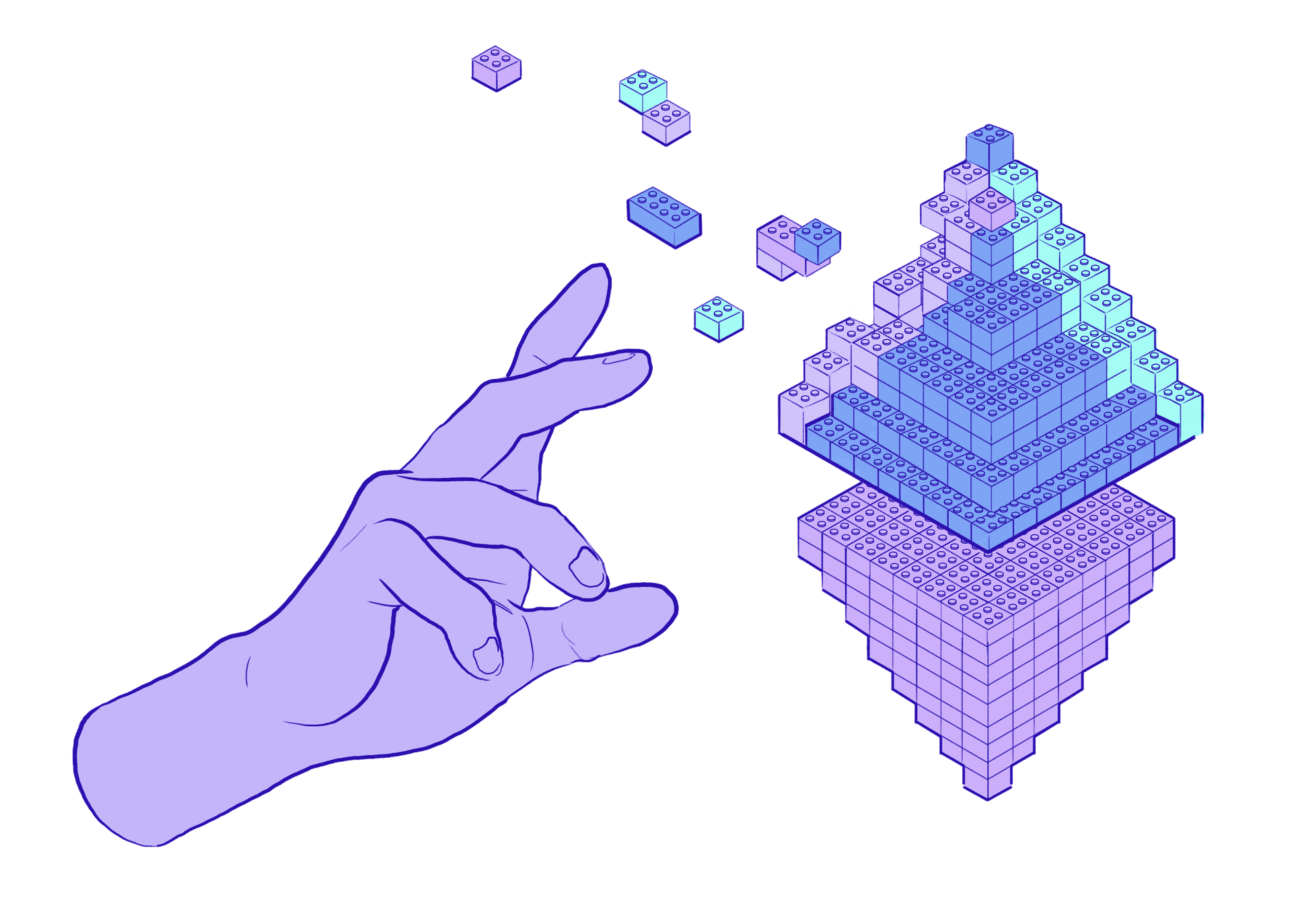
Ethereum roadmap
The path to more scalability, security and sustainability for Ethereum.
Paris (The Merge)
September 15, 2022
Shapella
April 12, 2023
Dencun
March 13, 2024
In production
Pectra
May 7, 2025
Fusaka
2025
Glamsterdam
2026

Paris (The Merge)
September 15, 2022
Main features
Transition to Proof of Stake
- Replaced energy-intensive mining with staking-based consensus
- Reduced Ethereum's energy consumption by ~99.95%
Beacon Chain Integration
- Merged the Beacon Chain with the Ethereum mainnet
- Enabled the full transition to PoS consensus mechanism
Difficulty Bomb Removal
- Removed the difficulty bomb that was increasing mining difficulty
- Ensured smooth transition to the new consensus mechanism

Shapella
April 12, 2023
Main features
Staking withdrawals
- Enabled validators to withdraw their staked ETH and rewards
- Introduced partial and full withdrawal capabilities
EIP-4895: Beacon chain push withdrawals
- Added a new system-level operation for withdrawals
- Ensured secure and efficient processing of withdrawal requests
EIP-3651: Warm COINBASE
- Reduced gas costs for accessing the COINBASE address
- Improved efficiency of certain smart contract operations

Dencun
March 13, 2024
Main features
Proto-danksharding (EIP-4844)
- Introduced blob transactions to significantly reduce rollup transaction costs
- Added a new transaction type that stores data temporarily and cheaply
EIP-1153: Transient storage opcodes
- Added TSTORE and TLOAD opcodes for temporary storage during transaction execution
- Enables more efficient smart contract patterns and reduces gas costs
EIP-4788: Beacon block root in the EVM
- Exposes consensus layer information to smart contracts
- Enables new trust-minimized applications and cross-chain bridges

Pectra
May 7, 2025
Main features
Enhance EOA wallets with smart contract functionality
- Users can set their address to be represented by a code of an existing smart contract and gain benefits such as transaction batching, transaction fee sponsorship or better recovery mechanisms
Increase the max effective balance
- Stakers can now choose an arbitrary amount of ETH to stake and receive rewards on every 1 ETH above the minimum
Blob throughput increase
- The blob count will be increased from 3 to 6 targets, with a maximum of 9, resulting in cheaper fees in Ethereum rollups

Fusaka
2025
Main features
PeerDAS (Peer-to-Peer Data Availability Sampling)
- Enables more efficient data availability for rollups
- Makes running a node more accessible while maintaining decentralization
Potential Additional Features
- Support for secure enclaves on mobile devices to improve UX
- Blob fee market improvements
- Further improvements to validator efficiency and network performance

What changes are coming to Ethereum?
Ethereum is already a powerful platform, but it is still being improved. An ambitious set of improvements will upgrade Ethereum from its current form into a fully scaled, maximally resilient platform.
Cheaper transactions
Rollups are too expensive and rely on centralized components, causing users to place too much trust in their operators. The roadmap includes fixes for both of these problems.
More on reducing feesExtra security
Ethereum is already very secure but it can be made even stronger, ready to withstand all kinds of attack far into the future.
More on securityBetter user experience
More support for smart contract wallets and light-weight nodes will make using Ethereum simpler and safer.
More on user experienceFuture-proofing
Ethereum researchers and developers are solving tomorrow's problems today, readying the network for future generations.
More on future-proofingWhy does Ethereum need a roadmap?
Ethereum gets regular upgrades that enhance its scalability, security, or sustainability. One of Ethereum's core strengths is adapting as new ideas emerge from research and development. Adaptability gives Ethereum the flexibility to tackle emerging challenges and keep up with the most advanced technological breakthroughs.
How the roadmap is defined
The roadmap is mostly the result of years of work by researchers and developers - because the protocol is very technical - but any motivated person can participate.
Ideas usually start off as discussions on a forum such as ethresear.ch, Ethereum Magicians or the Eth R&D discord server. They may be responses to new vulnerabilities that are discovered, suggestions from organizations working in the application layer (such as dapps and exchanges) or from known frictions for end users (such as costs or transaction speeds).
When these ideas mature, they can be proposed as Ethereum Improvement Proposals. This is all done in public so that anyone from the community can weigh in at any time.
More on Ethereum governance
What technical upgrades are coming to Ethereum?
Danksharding
Danksharding makes L2 rollups much cheaper for users by adding “blobs” of data to Ethereum blocks.
Learn moreSingle slot finality
Instead of waiting for fifteen minutes, blocks could get proposed and finalized in the same slot. This is more convenient for apps and difficult to attack.
Learn moreProposer-builder separation
Splitting the block building and block proposal tasks across separate validators creates a fairer, more censorship resistant and efficient way for Ethereum to come to consensus.
Learn moreSecret leader election
Clever cryptography can be used to ensure that the identity of the current block proposer is not made public, protecting them from certain types of attack.
Learn moreAccount abstraction
Account abstraction is a class of upgrades that support smart contract wallets natively on Ethereum, rather than having to use complex middleware.
Learn moreVerkle trees
Verkle trees are a data structure that can be used to enable stateless clients on Ethereum. These clients will require a small amount of storage space but will still be able to verify new blocks.
Learn moreStatelessness
Stateless clients will be able to verify new blocks without having to store large amounts of data. This will provide all the benefits of running a node with only a tiny fraction of today’s costs.
Learn more